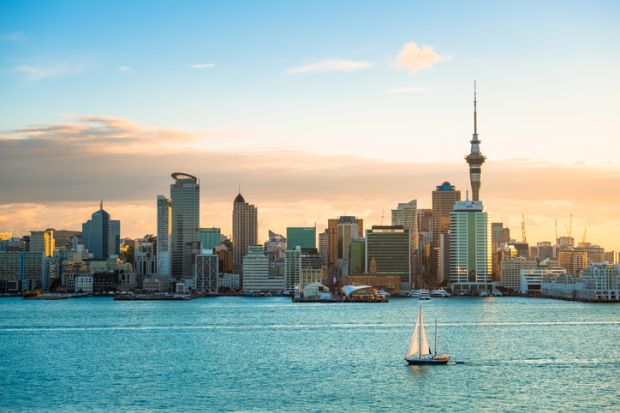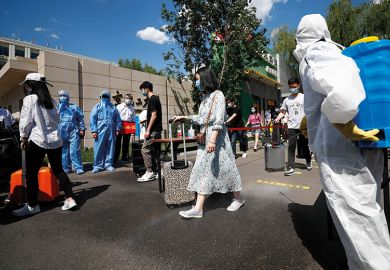New Zealand universities will not fast-track normal campus activities despite the government’s declaration that Covid-19 is all but eliminated within the nation.
NZ moved to national alert “level one” on 9 June, cancelling all containment measures apart from border controls. But the University of Auckland said the change would not alter its plan to remain in remote teaching mode until semester 2 in late July.
Auckland envisaged “a period of readjustment and gradual transition back to campus over the coming weeks”. It said its student residences were open, staff were being welcomed to their workplaces, most campus-based research could resume and on-campus study spaces were available on a “first come, first served” basis.
Most other NZ universities have adopted similar positions. Lincoln University said that regardless of the level 1 declaration, no semester 1 exams would be held on campus. Victoria University of Wellington will continue teaching online for the duration of trimester 1, which ends on 26 June, while encouraging students to return to campus for study and “safe” on-campus activities. The universities of Otago and Waikato promised to update their students about any changes.
NZ’s success in containing the virus owes much to prime minister Jacinda Ardern’s “go hard, go early” strategy. Campuses were closed from 25 March under level 4 lockdown measures that also saw all gatherings cancelled, most businesses closed and people instructed to stay home except for local exercise or essential travel.
The government eased to level 3 restrictions on 28 April and level 2 in mid-May. Campuses and halls of residence reopened under social distancing measures, with universities required to keep detailed records of visitors.
Universities New Zealand said some institutions had retained online approaches as the “default” for content delivery, while others offered a combination of remote and in-person teaching. But none planned “significant” campus-based programmes before the second academic term.
Executive director Chris Whelan said universities had no choice but to maintain full remote delivery while thousands of their students remained in China. “For as long as it takes to get international students safely back into NZ, we are going to have to keep on doing dual delivery,” he said.
Many East Asian universities have also been cautious about resuming face-to-face delivery in their gradually reopening campuses, and have continued running online classes simultaneously in case a new wave of infections forces them to close again.
UNZ said fears of a second wave were not so much of an issue in NZ, where no new coronavirus cases have been reported for 18 days. “The challenge is simply being able to allow students entry in a way which makes it absolutely certain that there is no chance of transmission,” Mr Whelan said. “We all support that.”
New Zealand’s director-general of health, Ashley Bloomfield, told a 9 June press conference that the government was considering opening the border to international students and some other groups. “The strength [of the] measures we have put around the border will assist with us being able to…think about how people can be brought back safely,” he said.
Mr Whelan said international education was the country’s fifth largest export, delivering NZ$5 billion (£2.6 billion) to the economy. “Government gets the economic argument. They get all the benefits of international education. The debate is just how to do it safely.”
Register to continue
Why register?
- Registration is free and only takes a moment
- Once registered, you can read 3 articles a month
- Sign up for our newsletter
Subscribe
Or subscribe for unlimited access to:
- Unlimited access to news, views, insights & reviews
- Digital editions
- Digital access to THE’s university and college rankings analysis
Already registered or a current subscriber?








